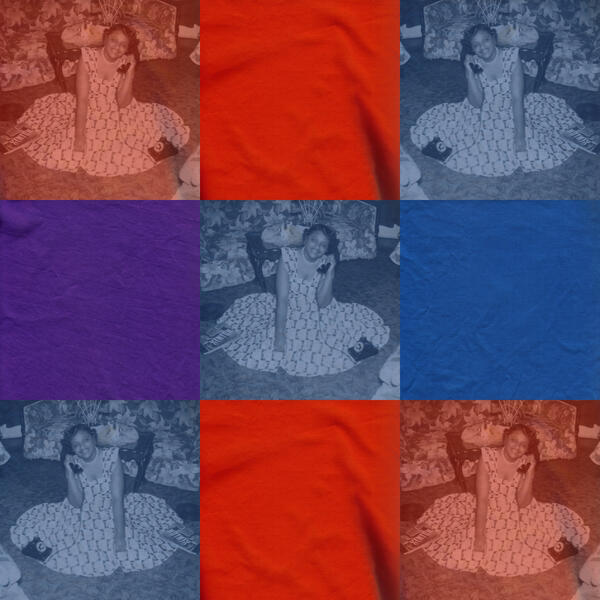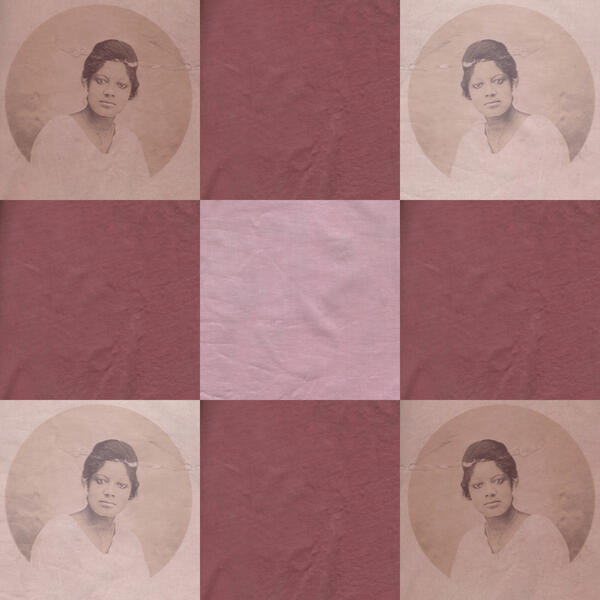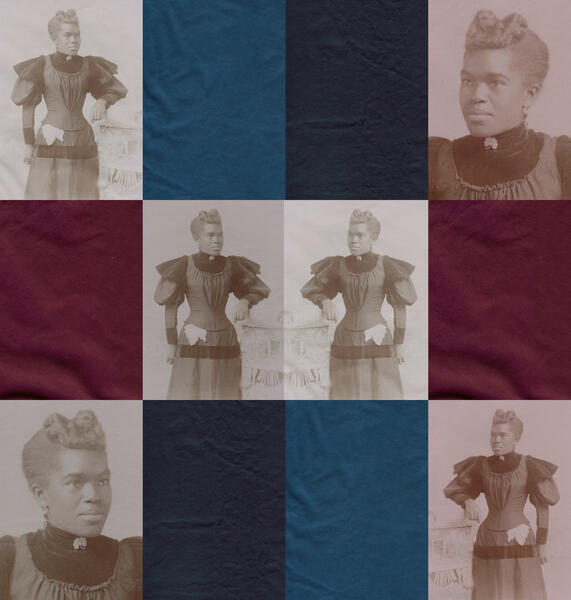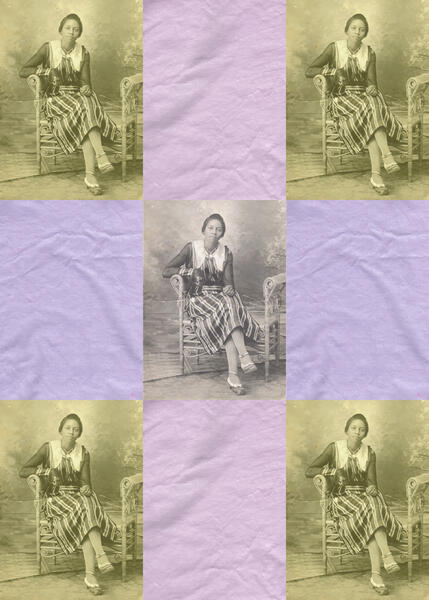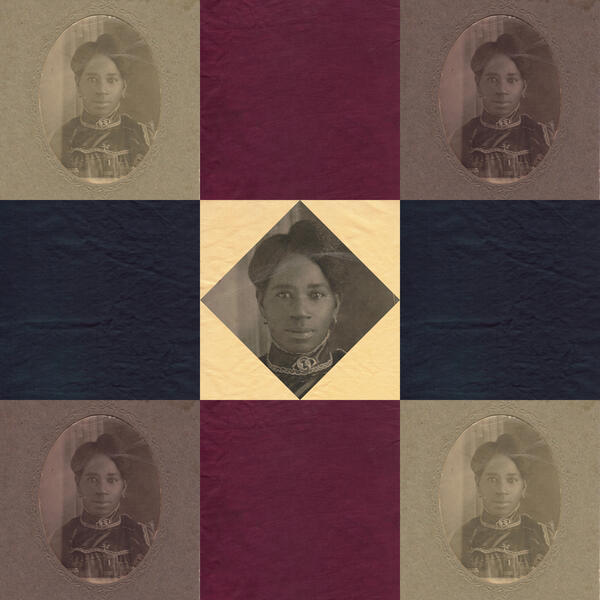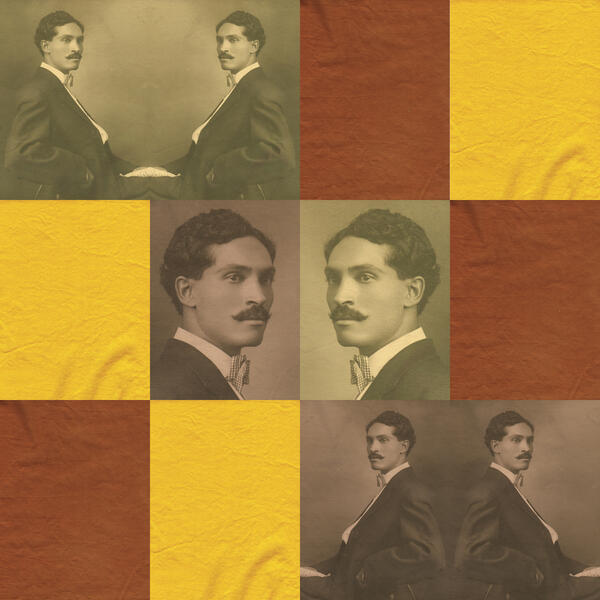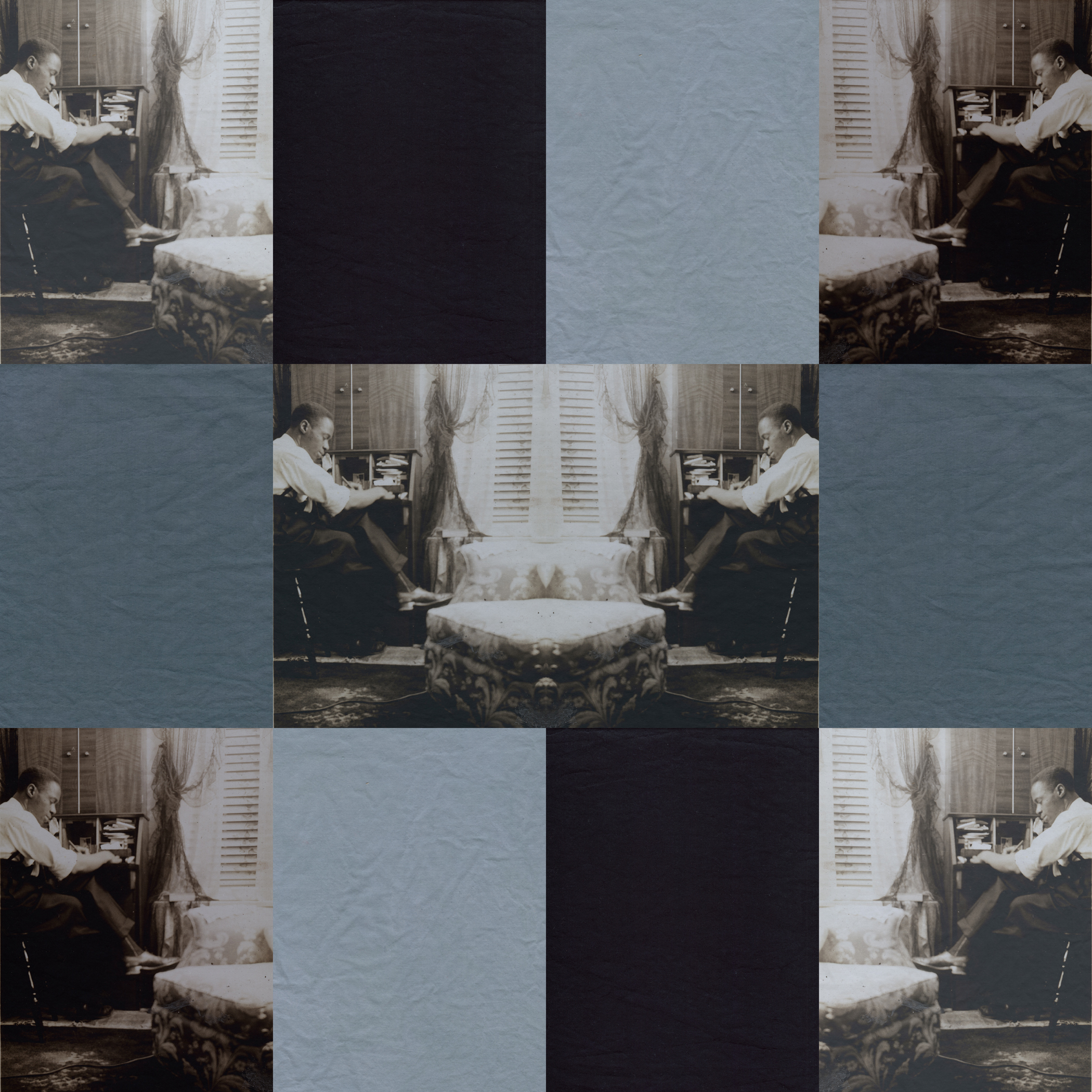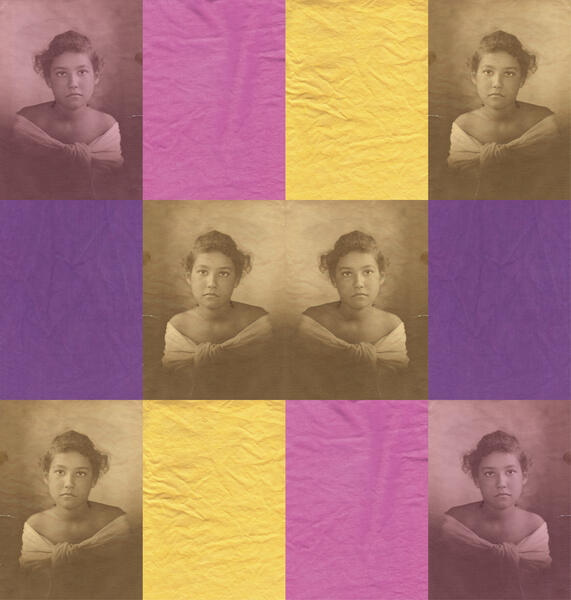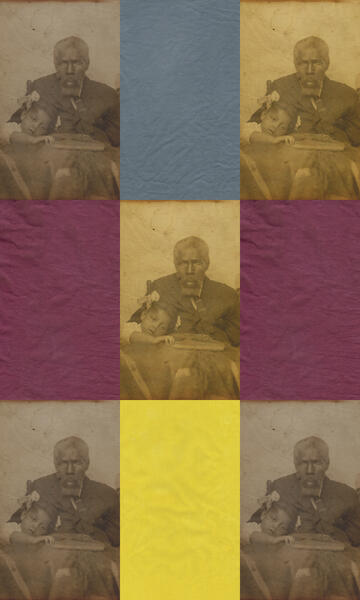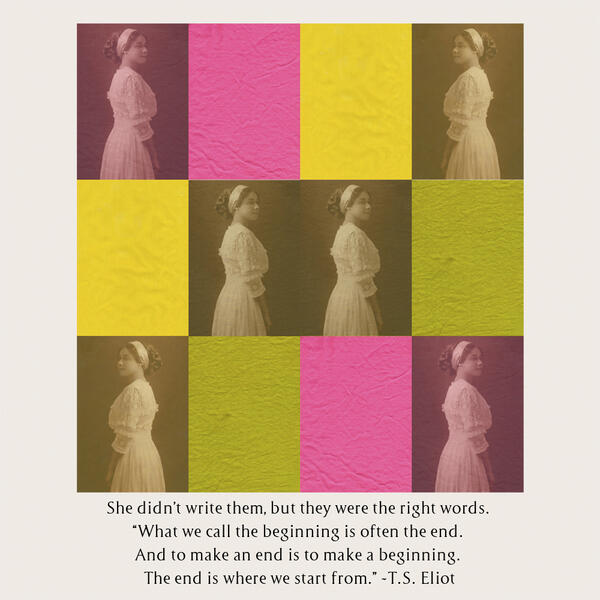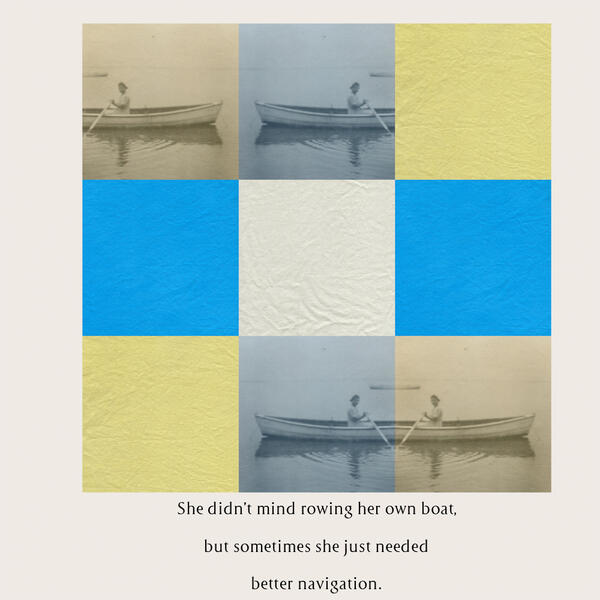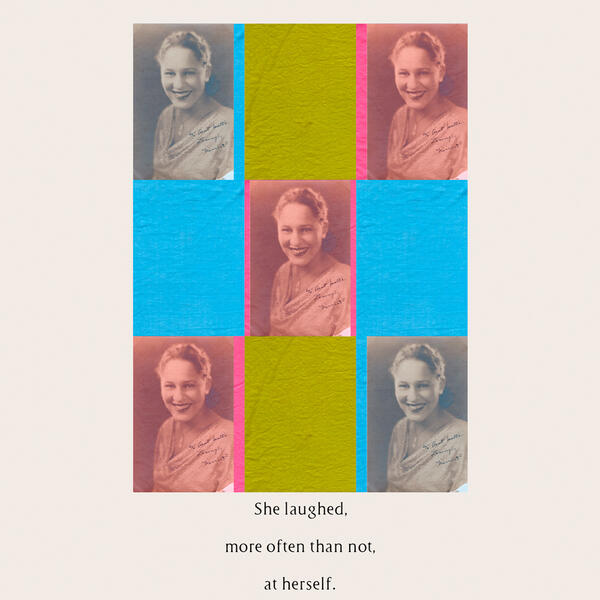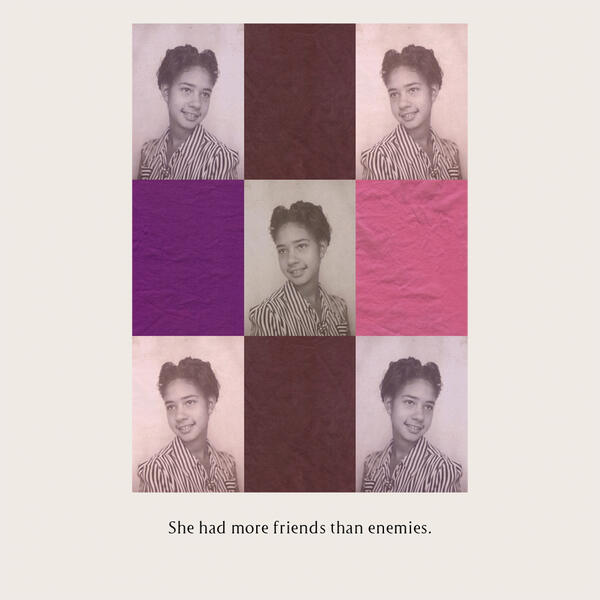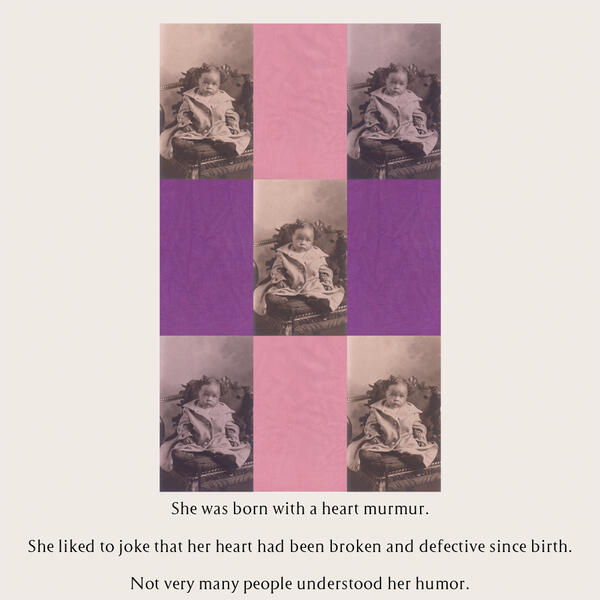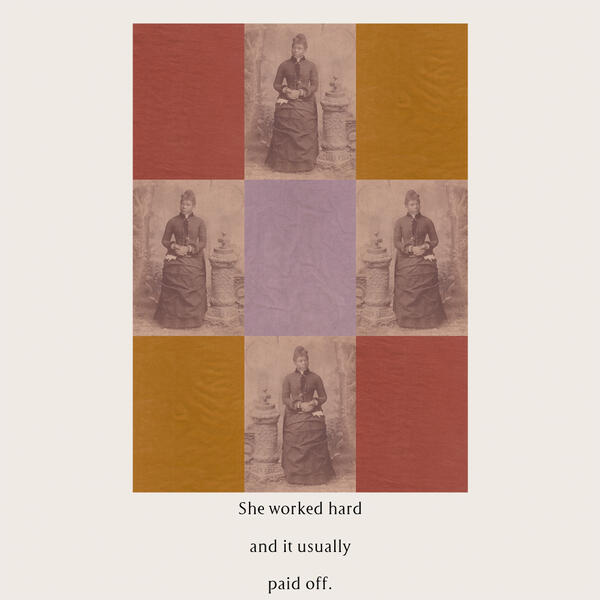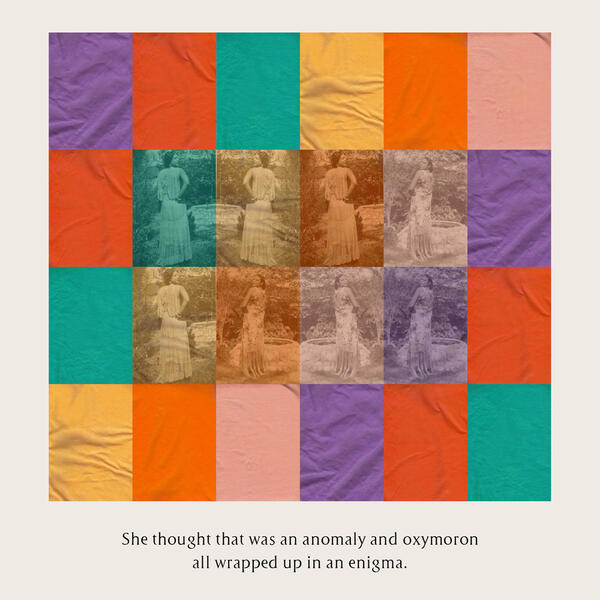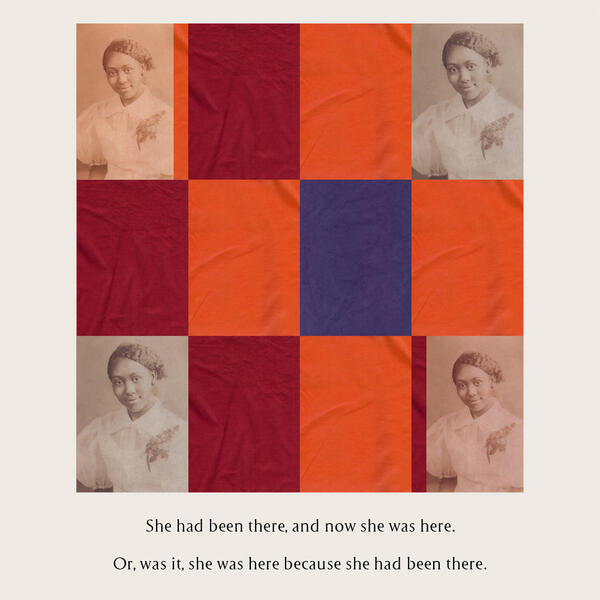About Sonya

Sonya A. Lawyer has exhibited widely in venues located in Baltimore, Maryland, Washington, D.C., New York City, among others. Recent solo exhibitions include "Finding Authenticity (does anyone remember?)" at GRACE (Greater Reston Arts Center) and "Searching for Beulah (limit of disturbance)" at School 33. She received a MFA from the University of Florida and a BS from Howard University.
Jump to a project:
Searching for Beulah
In 2001, I began collecting vintage photo albums. Most of them have been purchased through online auctions and others were purchased at antique stores. After several months of watching the online auctions, I realized that some participants would buy an album and then split apart the images in the album and re-sell them individually to make a larger profit. The women, men, and children are for the most part nameless and only now known by their auction id number and their seller’s quirky sign-on. The thought of families torn apart, albeit figuratively, and then sold to the highest bidder is very disturbing and repeats a very troubling part of history. Although I recognize my own complicity by participating in the auctions of my “ancestors,” I do feel that I am rescuing the albums (people) I can, from further disturbance.
As I looked over the albums for the past couple of years, I was never quite sure how to, and if I should, incorporate them into my own artistic practice. In a quest to work with new materials, and because I never felt as I if was finding the right colors in fabric stores, I began hand-dying cotton fabric. The texture and the process finally felt right.
I began the series with “Searching for Beulah (limit of disturbance)”, a series devoted to singular images of women of color. I continued the series with a focus on singular images of men in “Finding Authenticity (does anyone remember?).” The series continued with a focus on children in “Learning the Song (heart murmurs).”
In June 2012, I completed a 365 day online project called “A Peace (of the dream)” where I overlay a personal narrative over the anonymous imagery. The women in these images are strong and proud. The images are a celebration of color from ebony to ivory and every tone in between. The images are quintessential and timeless. Except for the telltale signs of clothing and hairstyle, some of the photographs could have been taken eight days ago instead of 80 years ago. The images are early twentieth-century tintypes to polaroids, however, they are all similar in that popular culture does not use images like these as a historical referent for the “black” body. They are not caricatures and stereotypes. They are human. Their eyes twinkle as they gaze at the camera, dressed in their best, with hair perfectly coiffed.
As I combed through the albums, I started to ask questions as I looked at these long-forgotten and abandoned people. What were their names? How long did they live? Where did they work? Who were their friends and lovers? Who were their enemies? Who disappointed them and discarded them like trash?
Unfortunately, I will probably never know the answers to my questions. At a reception one year, a viewer reminded me, “That’s the beauty of the piece.”
As I looked over the albums for the past couple of years, I was never quite sure how to, and if I should, incorporate them into my own artistic practice. In a quest to work with new materials, and because I never felt as I if was finding the right colors in fabric stores, I began hand-dying cotton fabric. The texture and the process finally felt right.
I began the series with “Searching for Beulah (limit of disturbance)”, a series devoted to singular images of women of color. I continued the series with a focus on singular images of men in “Finding Authenticity (does anyone remember?).” The series continued with a focus on children in “Learning the Song (heart murmurs).”
In June 2012, I completed a 365 day online project called “A Peace (of the dream)” where I overlay a personal narrative over the anonymous imagery. The women in these images are strong and proud. The images are a celebration of color from ebony to ivory and every tone in between. The images are quintessential and timeless. Except for the telltale signs of clothing and hairstyle, some of the photographs could have been taken eight days ago instead of 80 years ago. The images are early twentieth-century tintypes to polaroids, however, they are all similar in that popular culture does not use images like these as a historical referent for the “black” body. They are not caricatures and stereotypes. They are human. Their eyes twinkle as they gaze at the camera, dressed in their best, with hair perfectly coiffed.
As I combed through the albums, I started to ask questions as I looked at these long-forgotten and abandoned people. What were their names? How long did they live? Where did they work? Who were their friends and lovers? Who were their enemies? Who disappointed them and discarded them like trash?
Unfortunately, I will probably never know the answers to my questions. At a reception one year, a viewer reminded me, “That’s the beauty of the piece.”
Finding Authenticity
In 2001, I began collecting vintage photo albums. Most of them have been purchased through online auctions and others were purchased at antique stores. After several months of watching the online auctions, I realized that some participants would buy an album and then split apart the images in the album and re-sell them individually to make a larger profit. The women, men, and children are for the most part nameless and only now known by their auction id number and their seller’s quirky sign-on. The thought of families torn apart, albeit figuratively, and then sold to the highest bidder is very disturbing and repeats a very troubling part of history. Although I recognize my own complicity by participating in the auctions of my “ancestors,” I do feel that I am rescuing the albums (people) I can, from further disturbance.
As I looked over the albums for the past couple of years, I was never quite sure how to, and if I should, incorporate them into my own artistic practice. In a quest to work with new materials, and because I never felt as I if was finding the right colors in fabric stores, I began hand-dying cotton fabric. The texture and the process finally felt right.
I began the series with “Searching for Beulah (limit of disturbance)”, a series devoted to singular images of women of color. I continued the series with a focus on singular images of men in “Finding Authenticity (does anyone remember?).” The series continued with a focus on children in “Learning the Song (heart murmurs).”
In June 2012, I completed a 365 day online project called “A Peace (of the dream)” where I overlay a personal narrative over the anonymous imagery. The women in these images are strong and proud. The images are a celebration of color from ebony to ivory and every tone in between. The images are quintessential and timeless. Except for the telltale signs of clothing and hairstyle, some of the photographs could have been taken eight days ago instead of 80 years ago. The images are early twentieth-century tintypes to polaroids, however, they are all similar in that popular culture does not use images like these as a historical referent for the “black” body. They are not caricatures and stereotypes. They are human. Their eyes twinkle as they gaze at the camera, dressed in their best, with hair perfectly coiffed.
As I combed through the albums, I started to ask questions as I looked at these long-forgotten and abandoned people. What were their names? How long did they live? Where did they work? Who were their friends and lovers? Who were their enemies? Who disappointed them and discarded them like trash?
Unfortunately, I will probably never know the answers to my questions. At a reception one year, a viewer reminded me, “That’s the beauty of the piece.”
As I looked over the albums for the past couple of years, I was never quite sure how to, and if I should, incorporate them into my own artistic practice. In a quest to work with new materials, and because I never felt as I if was finding the right colors in fabric stores, I began hand-dying cotton fabric. The texture and the process finally felt right.
I began the series with “Searching for Beulah (limit of disturbance)”, a series devoted to singular images of women of color. I continued the series with a focus on singular images of men in “Finding Authenticity (does anyone remember?).” The series continued with a focus on children in “Learning the Song (heart murmurs).”
In June 2012, I completed a 365 day online project called “A Peace (of the dream)” where I overlay a personal narrative over the anonymous imagery. The women in these images are strong and proud. The images are a celebration of color from ebony to ivory and every tone in between. The images are quintessential and timeless. Except for the telltale signs of clothing and hairstyle, some of the photographs could have been taken eight days ago instead of 80 years ago. The images are early twentieth-century tintypes to polaroids, however, they are all similar in that popular culture does not use images like these as a historical referent for the “black” body. They are not caricatures and stereotypes. They are human. Their eyes twinkle as they gaze at the camera, dressed in their best, with hair perfectly coiffed.
As I combed through the albums, I started to ask questions as I looked at these long-forgotten and abandoned people. What were their names? How long did they live? Where did they work? Who were their friends and lovers? Who were their enemies? Who disappointed them and discarded them like trash?
Unfortunately, I will probably never know the answers to my questions. At a reception one year, a viewer reminded me, “That’s the beauty of the piece.”
Learning the Song
In 2001, I began collecting vintage photo albums. Most of them have been purchased through online auctions and others were purchased at antique stores. After several months of watching the online auctions, I realized that some participants would buy an album and then split apart the images in the album and re-sell them individually to make a larger profit. The women, men, and children are for the most part nameless and only now known by their auction id number and their seller’s quirky sign-on. The thought of families torn apart, albeit figuratively, and then sold to the highest bidder is very disturbing and repeats a very troubling part of history. Although I recognize my own complicity by participating in the auctions of my “ancestors,” I do feel that I am rescuing the albums (people) I can, from further disturbance.
As I looked over the albums for the past couple of years, I was never quite sure how to, and if I should, incorporate them into my own artistic practice. In a quest to work with new materials, and because I never felt as I if was finding the right colors in fabric stores, I began hand-dying cotton fabric. The texture and the process finally felt right.
I began the series with “Searching for Beulah (limit of disturbance)”, a series devoted to singular images of women of color. I continued the series with a focus on singular images of men in “Finding Authenticity (does anyone remember?).” The series continued with a focus on children in “Learning the Song (heart murmurs).”
In June 2012, I completed a 365 day online project called “A Peace (of the dream)” where I overlay a personal narrative over the anonymous imagery. The women in these images are strong and proud. The images are a celebration of color from ebony to ivory and every tone in between. The images are quintessential and timeless. Except for the telltale signs of clothing and hairstyle, some of the photographs could have been taken eight days ago instead of 80 years ago. The images are early twentieth-century tintypes to polaroids, however, they are all similar in that popular culture does not use images like these as a historical referent for the “black” body. They are not caricatures and stereotypes. They are human. Their eyes twinkle as they gaze at the camera, dressed in their best, with hair perfectly coiffed.
As I combed through the albums, I started to ask questions as I looked at these long-forgotten and abandoned people. What were their names? How long did they live? Where did they work? Who were their friends and lovers? Who were their enemies? Who disappointed them and discarded them like trash?
Unfortunately, I will probably never know the answers to my questions. At a reception one year, a viewer reminded me, “That’s the beauty of the piece.”
As I looked over the albums for the past couple of years, I was never quite sure how to, and if I should, incorporate them into my own artistic practice. In a quest to work with new materials, and because I never felt as I if was finding the right colors in fabric stores, I began hand-dying cotton fabric. The texture and the process finally felt right.
I began the series with “Searching for Beulah (limit of disturbance)”, a series devoted to singular images of women of color. I continued the series with a focus on singular images of men in “Finding Authenticity (does anyone remember?).” The series continued with a focus on children in “Learning the Song (heart murmurs).”
In June 2012, I completed a 365 day online project called “A Peace (of the dream)” where I overlay a personal narrative over the anonymous imagery. The women in these images are strong and proud. The images are a celebration of color from ebony to ivory and every tone in between. The images are quintessential and timeless. Except for the telltale signs of clothing and hairstyle, some of the photographs could have been taken eight days ago instead of 80 years ago. The images are early twentieth-century tintypes to polaroids, however, they are all similar in that popular culture does not use images like these as a historical referent for the “black” body. They are not caricatures and stereotypes. They are human. Their eyes twinkle as they gaze at the camera, dressed in their best, with hair perfectly coiffed.
As I combed through the albums, I started to ask questions as I looked at these long-forgotten and abandoned people. What were their names? How long did they live? Where did they work? Who were their friends and lovers? Who were their enemies? Who disappointed them and discarded them like trash?
Unfortunately, I will probably never know the answers to my questions. At a reception one year, a viewer reminded me, “That’s the beauty of the piece.”
A Peace (of the Dream)
“A Peace (of the Dream)” is a 365-day project dedicated to singular images of women located at www.apeaceofthedream.com
In 2001, I began collecting vintage photo albums. Most of them have been purchased through online auctions and others were purchased at antique stores. After several months of watching the online auctions, I realized that some participants would buy an album and then split apart the images in the album and re-sell them individually to make a larger profit. The women, men, and children are for the most part nameless and only now known by their auction id number and their seller’s quirky sign-on.
The thought of families torn apart, albeit figuratively, and then sold to the highest bidder is very disturbing and repeats a very troubling part of history. Although I recognize my own complicity by participating in the auctions of my “ancestors,” I do feel that I am rescuing the albums (people) I can, from further disturbance.
The women in these images are strong and proud. The images are a celebration of tones, from ebony to ivory, and everything from the spectrum in between. The images are quintessential. Except for the telltale signs of clothing and hairstyle, some of the photographs could have been taken eight days ago instead of 80 years ago. The images range from early twentieth-century tintypes to polaroids. They are not caricatures and stereotypes. They are authentic and human. Their eyes twinkle as they gaze at the camera, dressed in their best, with hair perfectly coiffed.
While creating this work, I started to ask questions as I looked at these long-forgotten and abandoned people. What were their names? How long did they live? Where did they work? Who were their friends and lovers? Who were their enemies? Who disappointed them and discarded them like trash?
I have merged some family photos with the anonymous ones, so I know some of the answers. The merging of the anonymous with the known, the universal with the very personal, is what creates the beauty of the piece.
In 2001, I began collecting vintage photo albums. Most of them have been purchased through online auctions and others were purchased at antique stores. After several months of watching the online auctions, I realized that some participants would buy an album and then split apart the images in the album and re-sell them individually to make a larger profit. The women, men, and children are for the most part nameless and only now known by their auction id number and their seller’s quirky sign-on.
The thought of families torn apart, albeit figuratively, and then sold to the highest bidder is very disturbing and repeats a very troubling part of history. Although I recognize my own complicity by participating in the auctions of my “ancestors,” I do feel that I am rescuing the albums (people) I can, from further disturbance.
The women in these images are strong and proud. The images are a celebration of tones, from ebony to ivory, and everything from the spectrum in between. The images are quintessential. Except for the telltale signs of clothing and hairstyle, some of the photographs could have been taken eight days ago instead of 80 years ago. The images range from early twentieth-century tintypes to polaroids. They are not caricatures and stereotypes. They are authentic and human. Their eyes twinkle as they gaze at the camera, dressed in their best, with hair perfectly coiffed.
While creating this work, I started to ask questions as I looked at these long-forgotten and abandoned people. What were their names? How long did they live? Where did they work? Who were their friends and lovers? Who were their enemies? Who disappointed them and discarded them like trash?
I have merged some family photos with the anonymous ones, so I know some of the answers. The merging of the anonymous with the known, the universal with the very personal, is what creates the beauty of the piece.
